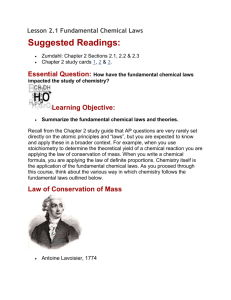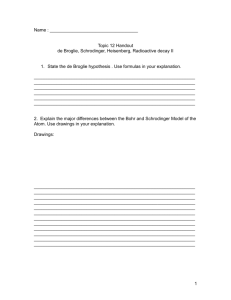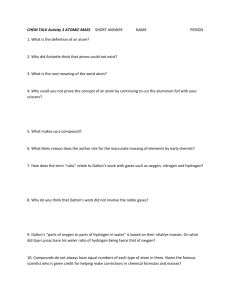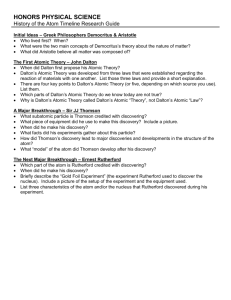Station 5 – Dalton`s Postulates 1. The action of bacteria on meat and
advertisement
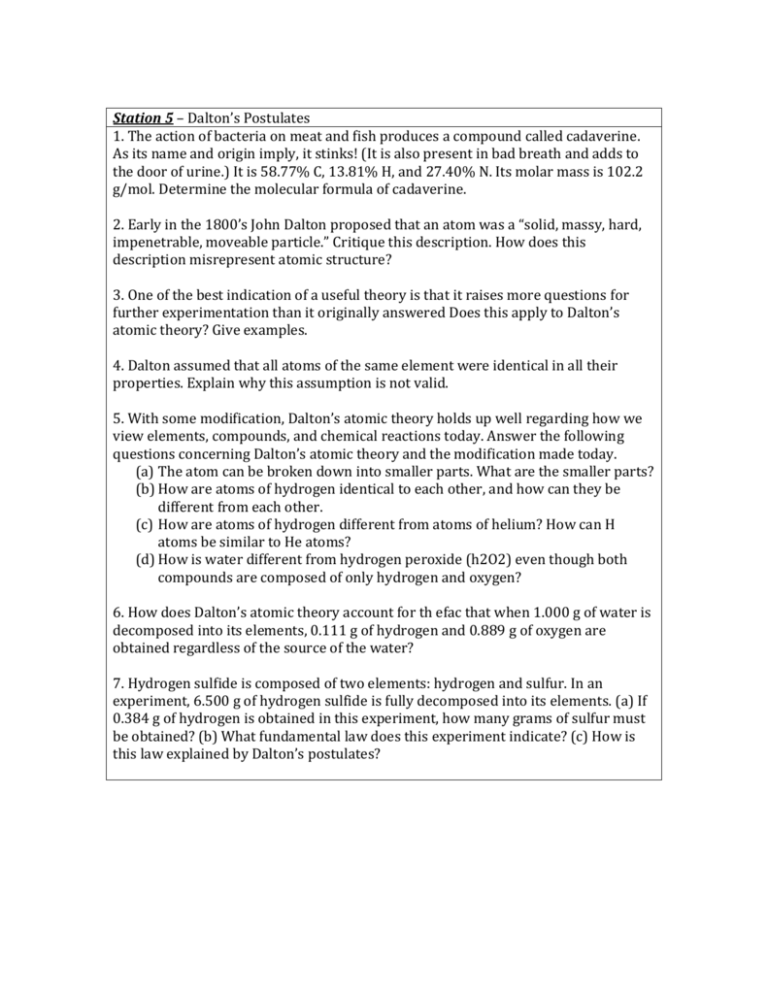
Station 5 – Dalton’s Postulates 1. The action of bacteria on meat and fish produces a compound called cadaverine. As its name and origin imply, it stinks! (It is also present in bad breath and adds to the door of urine.) It is 58.77% C, 13.81% H, and 27.40% N. Its molar mass is 102.2 g/mol. Determine the molecular formula of cadaverine. 2. Early in the 1800’s John Dalton proposed that an atom was a “solid, massy, hard, impenetrable, moveable particle.” Critique this description. How does this description misrepresent atomic structure? 3. One of the best indication of a useful theory is that it raises more questions for further experimentation than it originally answered Does this apply to Dalton’s atomic theory? Give examples. 4. Dalton assumed that all atoms of the same element were identical in all their properties. Explain why this assumption is not valid. 5. With some modification, Dalton’s atomic theory holds up well regarding how we view elements, compounds, and chemical reactions today. Answer the following questions concerning Dalton’s atomic theory and the modification made today. (a) The atom can be broken down into smaller parts. What are the smaller parts? (b) How are atoms of hydrogen identical to each other, and how can they be different from each other. (c) How are atoms of hydrogen different from atoms of helium? How can H atoms be similar to He atoms? (d) How is water different from hydrogen peroxide (h2O2) even though both compounds are composed of only hydrogen and oxygen? 6. How does Dalton’s atomic theory account for th efac that when 1.000 g of water is decomposed into its elements, 0.111 g of hydrogen and 0.889 g of oxygen are obtained regardless of the source of the water? 7. Hydrogen sulfide is composed of two elements: hydrogen and sulfur. In an experiment, 6.500 g of hydrogen sulfide is fully decomposed into its elements. (a) If 0.384 g of hydrogen is obtained in this experiment, how many grams of sulfur must be obtained? (b) What fundamental law does this experiment indicate? (c) How is this law explained by Dalton’s postulates? Station 6 – Radioactive Decay Check out this picture: 1. What is an isotope? 2. What is a radioactive isotope? How is it different from a regular isotope? 3. Calculate the average atomic mass of gold with the 50% being gold-197 and 50% being gold-198. 4. Hydrogen is 99% 1H, 0.8% 2H, and 0.2% 3H. Calculate its average atomic mass. 5. What is radioactive decay? 6. What is alpha decay? Draw a general reaction for alpha decay. Explain what type of material can block alpha radiation. 7. What is beta decay? Draw a general reaction for beta decay. Explain what type of material can block beta radiation. 8. What is gamma decay? Draw a general reaction for gamma decay. Explain what type of material can block gamma radiation. 9. Briefly explain the process by which we get nuclear energy. 10. Write a nuclear equation for the alpha decay of 14662Sm.



